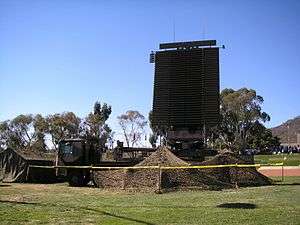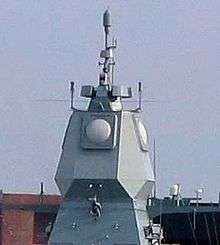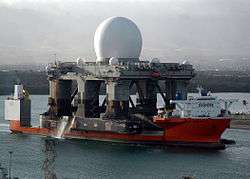Radiodetermination station
- This article is about Radiodetermination station and should not be confused with Radiodetermination.
Radiodetermination station is – according to article 1.86 of the International Telecommunication Union´s (ITU) ITU Radio Regulations (RR)[1] – defined as «A radio station in the radiodetermination service.»
A radiodetermination station uses reception of radio waves in order to determine the location of an object, under the condition that this thing is reflecting and/or transmitting radio waves. This designation may also be the collective name of any radar set in general, up to target location, illuminating, acquisition and tracking, as well as radar sigh, altimeter and precision-guided munitions or bombs.
- See also
- Main articles: Radio station and Radiocommunication service
Classification
Each radiodetermination station shall be classified by the radicommunication service in which it operates permanently or temporarily. In accordance with ITU Radio Regulations (article 1) this type of radio station might be classified as follows:
Radiodetermination station
- Radionavigation mobile station (article 1.87) of the radionavigation service (article 1.42)
- Radionavigation land station (article 1.88) of the radionavigation service
- Radiolocation mobile station (article 1.89) of the radiolocation service (article 1.48)
- Radiolocation land station (article 1.90) of the radiolocation service
- Radio direction-finding station (article 1.91)
- Selection radiodetermination stations
-

A long-range radar (parabolic antenna) -

Air Traffic Control -

mobile High finder radar -

RAAF radar, AN/TPS-77 -

Sea-mobile radar (Frigate Hamburg) -

Air borne radar „Lichtenstein SN-2“ in the ME Bf 110G -

Weapon homing radar -

Sea-based x-band radar -

Land radar (Fire control radar FuMG 39 „Würzburg“)
References / sources
- ↑ ITU Radio Regulations, Section IV. Radio Stations and Systems – Article 1.86, definition: radiodetermination station
